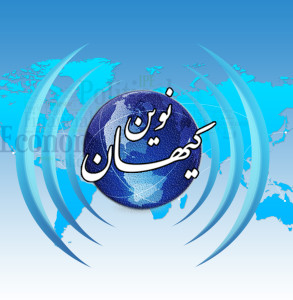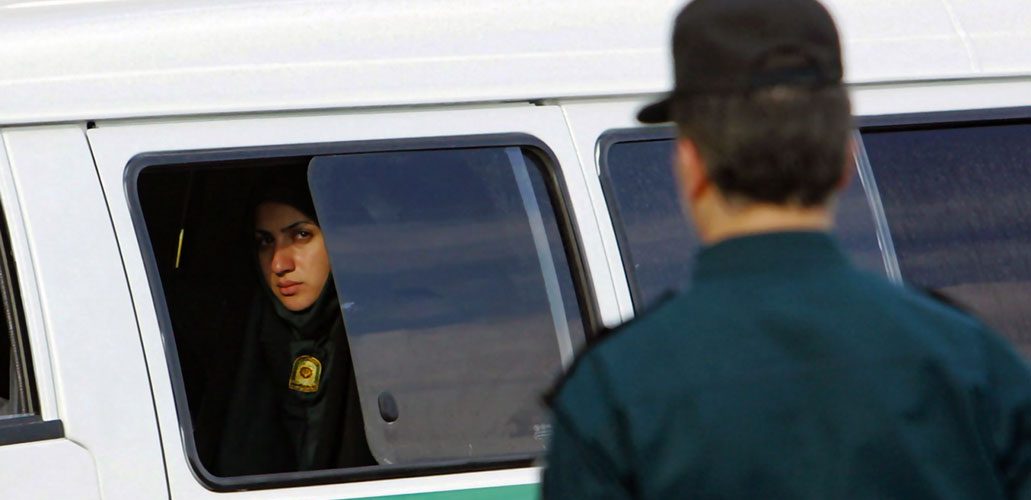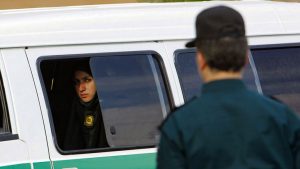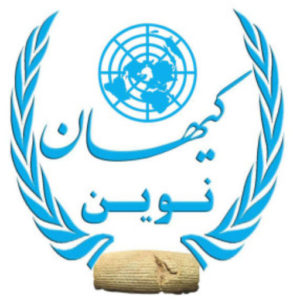در روزهای گذشته تحرکات امنیتی- قضایی جمهوری اسلامی و اعلام موضع چهرههای اصلاحطلب و اصولگرا نشان از تدارک و برنامهریزی رژیم برای اعتراضات احتمالی شهروندان در هفتههای پیش رو دارد؛ اعتراضاتی که همزمان با فرا رسیدن سالگرد آغاز جنبش ملّی در پی قتل حکومتی مهسا امینی و همچنین نخستین سالگرد جان باختن جوانانی که در پی هم توسط نیروهای سرکوب کشته شدند همراه با افزایش نارضایتی عمومی در پی گرانی و مشکلات معیشتی بسیار محتمل به نظر میرسد.
In the past days, the security-judicial movements of the Islamic Republic and the announcement of the position of reformist and fundamentalist figures show that the regime is preparing and planning for possible protests by citizens in the coming weeks; The protests that coincide with the arrival of the anniversary of the beginning of the national movement following the government murder of Mahsa Amini, as well as the first anniversary of the deaths of young people who were killed one after another by the repression forces, along with the increase in public dissatisfaction due to persecution and livelihood problems, seem very likely.
کیهان نوین: اتاقهای فکر جمهوری اسلامی برای خنثی کردن اعتراضات جامعه در نخستین سالگرد جنبش ملی آماده شده و برای مهندسی آن در حال برنامهریزی هستند.
برخی اظهارات مقامات حکومتی بیانگر هراس نظام از شکل گرفتن دوباره اعتراضات و همزمان برای روحیه بخشیدن به نیروهای «خودی» و عوامل سرکوب است.
به راه انداختن دوبارهی «گشت ارشاد» سه هدف را دنبال میکند: نمایش اقتدار که ریشه در هراس حکومت دارد؛ آماده ساختن نیروهای سرکوبگر با مانورهای خیابانی، و سنجش واکنش و ظرفیت مردم.
حکومت با «پروژه حجاب» علیه اعتراضات آماده میشود!
اتاقهای فکر جمهوری اسلامی برای خنثی کردن اعتراضات جامعه در نخستین سالگرد جنبش ملی آماده شده و برای مهندسی آن در حال برنامهریزی هستند.
از ابتدای امسال، خروجی این برنامهریزیها با بازداشت فعالان سیاسی مخالف از جمله تشکیل پرونده برای زندانیان سیاسی مشروطهخواه که پیش از نوروز با نمایش «عفو» آزاد شده بودند و بازداشت دوبارهی آنها، و همچنین صدور احکام قضایی علیه خانوادههای دادخواه نمایان شد.
در یکی از جدیدترین اقداماتِ نهادهای امنیتی و قضایی، ماشینهای گشت ارشاد که پس از قتل مهسا امنیتی در بازداشت همین گشت، جمعآوری شده بودند، بهخیابانها بازگشتند. این اقدام را میتوان مهمترین پروژه نهادهای امنیتی پیش از سالگرد اعتراضات جنبش ملّی دانست که به نظر میرسد سه هدف را دنبال میکند: نمایش اقتدار که ریشه در هراس حکومت دارد؛ آماده ساختن نیروهای سرکوبگر با مانورهای خیابانی، و سنجش واکنش و ظرفیت مردم.
چند ماه پیش در پی آرام شدن اعتراضات خیابانی، نهادهای امنیتی برجسته ساختن موضوع «حجاب» را در دستور کار قرار دادند تا نشان دهند نه تنها جنبش ۴۰۱ بلکه اعتراضات مردم در سالهای پیشتر نیز که به کشته و زخمی شدن هزاران تن و بازداشت دهها هزار شهروند انجامید، در «پوشش اختیاری» خلاصه شده است. در حالی که سالهاست بسیاری از زنان ایران به ویژه در کلانشهرها حجاب اجباری مورد نظر نظام را رعایت نمیکنند و پس از آغاز دوبارهی اعتراضات سراسری در شهریور گذشته نیز با آتش زدن روسریها و برداشتن حجاب اجباری به شکل گستردهتری تداوم یافت. پس از آن، ماهها بود که زنان و دختران بدون شال و روسری در معابر و اماکن عمومی ظاهر میشدند اما ناگهان بار دیگر موضوع «حجاب» از سوی حکومت و نیروهای نیابتیاش در داخل و خارج کشور برجسته شد.
هرچند عدم استفاده از حجاب اجباری و تحمیلی و حضور در اماکن عمومی با پوشش اختیاری یکی از بزرگترین مبارزات مدنی جامعه به شمار میرود، اما از یکسو این مخالفت پیشینهای به عمر جمهوری اسلامی دارد و از نخستین ماهها پس از انقلاب ۵۷ آغاز شد، و از سوی دیگر این موضوع تنها خواست و حق مردم در اعتراضات نبوده و نیست. مردم ایران سالهاست در پی موج آگاهی ملّی دریافتهاند که آزادی را باید با عبور از جمهوری اسلامی و انقلاب۵۷ که آن را روی کار آورد دنبال کنند.
در چنین شرایطی برجسته ساختن موضوع «حجاب» از سوی حکومت و هواداران اصولگرا و اصلاحطلب آن در داخل و خارج کشور، با هدف تقلیل حقوق سیاسی و اجتماعی ملت ایران به «یک حق» که «قابل چانهزنی و حل شدن در چارچوب و ساختاری جمهوری اسلامی» است، صورت میگیرد.
هراس مقامات فقط برای تحمیل «حجاب اجباری»؟!
این پروژه در حالی اکنون با مقاومت و هوشمندی مردم شکست خورده که به نظر میرسد همچنان تئوریسینهای امنیتی نظام فکر میکنند پافشاری بر موضوع حجاب اجباری، آنهم در حالی که جامعه از آن عبور کرده، تنها ابزار برای مقابله با اعتراضات احتمالی است. در نتیجه حکومت با گسیل کردن ماشینهای گشت ارشاد به خیابان، ولو به صورت موقت و با تبلیغات گسترده خبری، تلاش میکند تا هزینه و فایده پافشاری بر حجاب اجباری را بسنجد و ببیند تجهیز نیروهای سرکوب در سطح شهرها پیش از نخستین سالگرد جنبش ملّی به چه شکل پاسخ خواهد داد چرا که «کشف حجاب» یکی از نمادهای مهم اعتراضات احتمالی خواهد بود.
چنانکه در روزهای گذشته، برای نمونه، مقاومت شهروندان در شیراز در برابر گشت ارشاد نشان داد که مردم میتوانند آنها را از خیابانها عقب برانند. آنهم در حالی که گزارشهای زیادی از تحلیل رفتن قوای سرکوب و کاهش انگیزه نیروهای سرکوب برای ایستادن در مقابل شهروندان و اختلاف در میان آنها منتشر شده است. به بیان دیگر جمهوری اسلامی تردید دارد که در صورت بروز اعتراضات گسترده، توان و اراده کافی در نیروهای سرکوبگرش برای مدیریت و خالی کردن خیابانها از معترضان داشته باشند.
برخی اظهارات مقامات حکومتی نیز بیانگر هراس نظام از شکل گرفتن دوباره اعتراضات و همزمان برای روحیه بخشیدن به نیروهای «خودی» و عوامل سرکوب است. فرماندهان سپاه پاسداران انقلاب اسلامی از جمله حسین سلامی، علی فدوی، مهدی سیاری و اسماعیل کوثری در آستانه سالگرد انقلاب ملی در اظهاراتی جداگانه با اشاره به اعتراضات سال گذشته گفتهاند بسیاری از مقامات تصور میکردند «کار نظام تمام» و «سقوط قریب الوقوع» رخ خواهد داد.
مهدی سیاری جانشین فرمانده اطلاعات سپاه گفته جمهوری اسلامی این اعتراضات را با امدادهای غیبی کنترل کرده است! علی فدوی جانشین فرمانده کل سپاه پاسداران هم «عنایت خدا» و حضور نیروهای بسیج، انتظامی، امنیتی را عامل عبور حکومت از اعتراضات سال گذشته خوانده است.
آیا باورکردنیست که این اظهارات ناشی از نگرانی و هراس فقط برای تحمیل «حجاب جباری» است که در عمل رعایت نمیشود؟!
سالگردهای جانباختگان و فشار بر دادخواهان
جدا از اینکه فرا رسیدن سالگرد «انقلاب مهسا» تهدیدی علیه جمهوری اسلامی و انگیزهای برای مردم به شمار میرود، زنجیرهی طولانی سالگرد جانباختگان میهن نیز از ۲۵ شهریور به بعد با سالگرد مهسا آغاز میشود و برگزاری هر مراسم در نقطهای از ایران به معنای یک تجمع اعتراضی علیه حکومت خواهد بود. به همین دلیل است که از ماهها پیش تشکیل پرونده قضایی و صدور حکم علیه خانوادههای دادخواه ۱۴۰۱ آغاز شده؛ برخی از آنها بازداشت و زندانی هستند و برخی دیگر با احکام چند سال زندان وشلاق، زیر رگبار تهدید نهادهای امنیتی تحت فشار قرار گرفتهاند.
هراس از دانشجویان و دانشآموزان
از سوی دیگر، با آغاز سال تحصیلی جدید که همزمان با سالگرد جنبش ملّی است احتمال اعتراضات دانشجویی و دانشآموزی افزایش مییابد. جنبش دانشجویی که از سال ۹۷ مسیر خود را از جناح اصلاحطلب نظام جدا کرد و مستقل در برابر جمهوری اسلامی ایستاد، در ماههای گذشته با تعلیق و گشودن پرونده علیه هزاران دانشجو در سراسر کشور و اخراج دهها دانشجو روبرو بوده است. استقرار بیش از پیشِ لباسشخصیها و بسیجیها در دانشگاهها و بخشیدن ظرفیت دانشگاهی به نیروهای سرکوبگر حشد الشعبی از راهکارهای رژیم برای سرکوب اعتراضات در دانشگاههاست.
فشار بر فعالان سیاسی و زندانیان سیاسی سابق
همچنین در هفتههای گذشته بسیاری از فعالان سیاسی مخالف بازداشت شدند. برخی از آنها پیشتر زندانی بوده و اواخر سال گذشته با نمایش «عفو زندانیان» آزاد شده بودند اما یکی پس از دیگری در سال جدید بازداشت و با پروندههای جدید روبرو شدند. سمانه نوروز مرادی، رضا نوروزی، محبوبه رضایی، رضا محمدحسینی، حمیده زارعی و یاشار تبریزی از جمله دستگیرشدگان در هفتههایگذشته هستند. برخی دیگر از زندانیان نیز در زندان با پروندههای جدید روبرو شده و به چند سال زندان اضافی محکوم شدهاند. از جمله مهدی مسکیننواز زندانی سیاسی مشروطهخواه در زندان اوین بابت پروندهای که در مدت زندان علیه وی باز شده به ۱۱ سال حبس تعزیری محکوم شده است.
فعالان سیاسی مخالف نظام میتوانند در صورت بروز اعتراضات به عنوان نیروهای میدانی مؤثر جهت ارتباطات و سازماندهی معترضان در شهرهای مختلف وارد عمل شوند، به همین دلیل دستگاههای امنیتی و قضائی آنها را محدود کرده و زیر فشار بازداشت و حکم زندان قرار میدهند.
فشار بر فعالان صنفی
فعالان صنفی به ویژه با توجه به تشدید نارضایتیهای معیشتی از جمله گروههایی هستند که برای جمهوری اسلامی تهدید به شمار میروند. این فعالان میتوانند پیونددهنده اعتراضات صنفی به اعتراضات خیابانی باشند و در چنین صورتی موج جدیدی از نیروهای اعتراضی به دیگر شهروندان خواهد پیوست که مدیریت فضا را برای حکومت به مراتب دشوارتر خواهد ساخت. از همین رو همزمان با افزایش فشار بر خانوادههای دادخواه و فعالان سیاسی، فشارها بر فعالان صنفی نیز با تهدید، احضار، صدور حکم زندان و اجرای احکام علیه آنها شدت پیدا کرده است.
مشکلات اما عمیقتر از آنست که با بازداشت و احضار و صدور حکم علیه فعالان سیاسی و صنفی و خانوادههای دادخواه، مقامات حکومت امیدوار باشند که فضای اعتراضی جامعه را که به حد انفجار رسیده، میتوانند کنترل کنند.
کمر اقشار مختلف زیر بار تورم فزاینده و گرانی گسترده شکسته است؛ سناریوهایی چون «خبردرمانی» و ایجاد «امید کاذب» برای آزاد شدن پولهای بلوکه شده و گشایش در مذاکرات و بهبود روابط بینالملل و برداشته شدن تحریمها دیگرپاسخگو نیست.
روزهای هولناک در انتظار رژیم
تیم اقتصادی دولت سیزدهم توان و اراده مدیریت اقتصادی کشور در شرایطی به این حد بحرانی را ندارد. خزانه خالی و پشتوانه غذایی کشور با تهدید روبروست. کسری بودجه برخلاف ادعای مقامات، افزایش یافته و تأمین هزینههای جاری کشور به سختی انجام میشود. دامنه اعتراضات به شرایط فلاکتبار معیشتی و درخواست و انگیزه برای اعتصابات به کارمندان دولت و پرسنل نیروی انتظامی رسیده است. در آنسو نیز یکی پس از دیگری پروندههای فساد جریانهای مختلف رژیم توسط رقبای حکومتی افشا شده و بر خشم عمومی میافزاید.
هرچند جمهوری اسلامی در کنار نمایش اقتدار و سرکوب، به نمایشهایی چون تصویب طرح تحقیق و تفحص از اداره اوقاف نیز متوسل شده اما به نظر نمی رسد ساختار پوسیده و رو به زوال و فروپاشی نظام که هر لحظه ممکن است زیر تبر خشم مردم و موج تازهای از اعتراضات سراسری قرار بگیرد، با چنین اقدامات بیاثری حفظ شود.
New Universe:
The think tanks of the Islamic Republic have prepared to neutralize the community protests on the first anniversary of the national movement and are planning to engineer it.
– Some statements of government officials express the system’s fear of the re-formation of protests and at the same time to give morale to “inside” forces and agents of repression.
– The re-launching of “Gesht Irshad” pursues three goals: the demonstration of authority, which is rooted in the fear of the government; Preparing repressive forces with street maneuvers, and measuring people’s reaction and capacity.
The government is preparing against the protests with the “Hijab Project”!
The think tanks of the Islamic Republic have prepared to neutralize the community protests on the first anniversary of the national movement and are planning to engineer it.
Since the beginning of this year, the outcome of these plans has been shown by the arrest of opposition political activists, including the filing of cases against the constitutional political prisoners who were released before Nowruz with the “Amnesty” show and their re-arrest, as well as the issuance of court orders against the petitioning families.
In one of the latest actions of the security and judicial institutions, the cars of the Irshad patrol, which were collected after the murder of Mahsa, in the custody of the same patrol, returned to the streets. This action can be considered the most important project of the security institutions before the anniversary of the protests of the National Movement, which seems to pursue three goals: the display of authority, which is rooted in the fear of the government; Preparing repressive forces with street maneuvers, and measuring people’s reaction and capacity.
A few months ago, after the street protests calmed down, the security institutions put highlighting the issue of “hijab” on the agenda to show that not only the 401 movement, but also the people’s protests in previous years, which led to the deaths and injuries of thousands of people and the arrest of tens of thousands of citizens, were summed up in “optional veiling”. For many years, many women in Iran, especially in the big cities, do not observe the compulsory hijab required by the regime, and after the resumption of nationwide protests last September, it continued with the burning of scarves and the removal of the compulsory hijab. After that, for months, women and girls appeared without shawls and scarves in the streets and public places, but suddenly the issue of “hijab” was highlighted again by the government and its proxies inside and outside the country.
Although the non-use of mandatory and imposed hijab and the presence in public places with voluntary covering is one of the biggest civil struggles of society, on the one hand, this opposition has a history dating back to the life of the Islamic Republic and started from the first months after the 1979 revolution, and on the other hand, this issue was not and is not the only desire and right of the people in protests. For many years, following the wave of national consciousness, the people of Iran have realized that freedom should be pursued by passing through the Islamic Republic and the 1979 revolution that brought it to fruition.
In such a situation, highlighting the issue of “hijab” by the government and its fundamentalist and reformist supporters inside and outside the country is done with the aim of reducing the political and social rights of the Iranian nation to “one right” which is “negotiable and resolved within the framework and structure of the Islamic Republic”.
Fear of the authorities just to impose “mandatory hijab”?!
This project has now failed due to the resistance and intelligence of the people, and it seems that the security theorists of the system still think that insisting on the issue of compulsory hijab, even though the society has passed it, is the only tool to deal with possible protests. As a result, the government is trying to measure the cost and benefits of insisting on the compulsory hijab by sending patrol cars to the streets, albeit temporarily and with extensive news advertisements, and to see how the equipping of repression forces at the city level will respond before the first anniversary of the national movement, because the “discovery of the hijab” will be one of the important symbols of possible protests.
As in the past days, for example, the resistance of the citizens in Shiraz against the guidance patrol showed that people can push them back from the streets. Meanwhile, many reports have been published about the weakening of the repression forces and the reduction of the motivation of the repression forces to stand up to the citizens and the differences among them. In other words, the Islamic Republic doubts that in the event of massive protests, they will have enough power and will in their repressive forces to manage and clear the streets of protesters.
Some statements of the government officials also show the system’s fear of the re-formation of protests and at the same time to give morale to the “inside” forces and agents of repression. Commanders of the Islamic Revolutionary Guard Corps, including Hossein Salami, Ali Fadavi, Mehdi Siyari and Ismail Kothari, in separate statements on the eve of the National Revolution anniversary, referring to last year’s protests, said that many officials thought that “the work of the whole system” and “imminent collapse” would occur.
Mehdi Siari, the deputy commander of IRGC intelligence, said that the Islamic Republic controlled these protests with invisible aid! Ali Fadavi, the Deputy Commander-in-Chief of the Islamic Revolutionary Guard Corps, also called “God’s grace” and the presence of mobilization, law enforcement, and security forces as the reason for the government’s passage of last year’s protests.
Is it not believable that these statements are caused by worry and fear only to impose a “coercive veil” that is not observed in practice?!
Anniversaries of the deceased and pressure on the plaintiffs
Apart from the fact that the anniversary of the “Mehsa revolution” is a threat to the Islamic Republic and a motivation for the people, the long chain of commemorations of the martyrs of the country will also begin from 25 September onwards with the anniversary of Mehsa, and holding any event in any part of Iran will mean a protest rally against the government. This is the reason why the filing of court cases and the issuing of judgments against the families of the 2022 petitioners have started months ago; Some of them are arrested and imprisoned, and others have been subjected to several years of imprisonment and flogging under the barrage of threats from the security agencies.
Fear of students
On the other hand, with the beginning of the new academic year, which coincides with the anniversary of the national movement, the possibility of student protests increases. The student movement, which separated its path from the reformist faction of the regime and stood independently against the Islamic Republic since 2018, has faced the suspension and opening of cases against thousands of students across the country and the expulsion of dozens of students in the past months. Establishing more private uniforms and Basij forces in universities and giving university capacity to the repressive forces of Hashd al-Shaabi are among the regime’s strategies to suppress protests in universities.
Pressure on political activists and former political prisoners
Also, many opposition political activists were arrested in the past weeks. Some of them were previously imprisoned and were released late last year with the “Prisoner Amnesty” show, but they were arrested one after another in the new year and faced new cases. Semane Norouz Moradi, Reza Norouzi, Mehbobeh Rezaei, Reza Mohammad Hosseini, Hamida Zarei and Yashar Tabrizi are among those arrested in the past weeks. Some other prisoners also faced new cases in prison and were sentenced to several years of additional prison terms. Among them, Mehdi Meskinnawaz, a constitutionalist political prisoner in Evin prison, has been sentenced to 11 years in prison for the case that was opened against him during his imprisonment.
Political activists against the regime can act as effective field forces to communicate and organize protestors in different cities in the event of protests, for this reason the security and judicial systems limit them and put them under the pressure of arrest and prison sentences.













